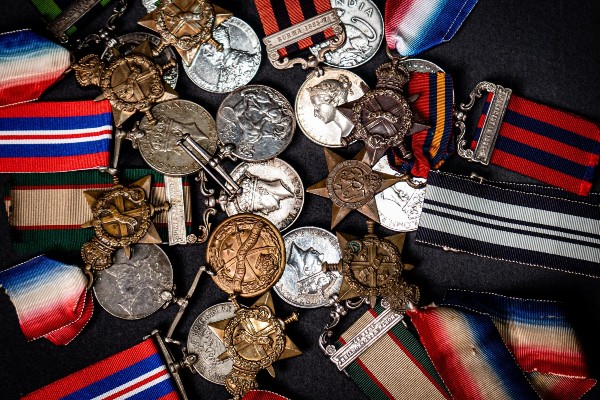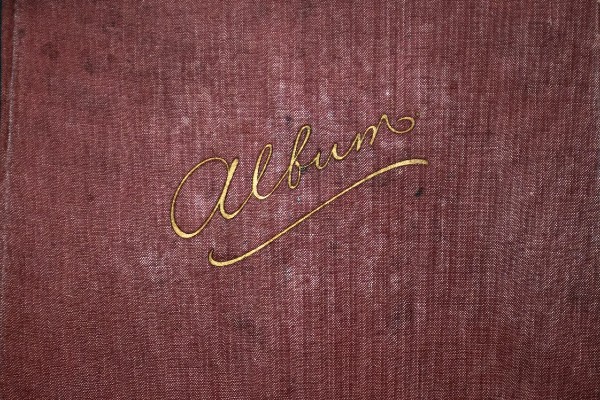Dissent Against Recolonisation

In our capacity as the preservers and collectors of British India(n) and the Sikh Raj (Empire) artifacts in British Columbia, and our advocacy for marginalized individuals, we were irresistibly drawn to the article titled 'South Asian Canadian Digital Archive: Fostering Knowledge Diversity and Equity Through Multilingual Knowledge Infrastructures'1. This is our direct response to that article. This is not the first time we have responded to similar affronts, and it will not be the last. We stand resolutely committed to shedding light on this issue and vehemently oppose any endeavours aimed at obfuscating the truth. We are steadfast in our resolve as we observe members of the University of Fraser Valley, some consciously and some unknowingly contributing to the erosion of our identities, the diversion of public discourse, and the unjust treatment of diasporic communities.
1 https://popjournal.ca/issue05/jothilingamThe article starts with a compelling quote from Walter D. Mignolo. In essence, Mignolo's words implicitly acknowledge the dual nature of knowledge, which can either perpetuate harm or pave the way for enlightenment. This duality underscores the paramount importance of fostering equitable and diverse knowledge infrastructures. We speculate, observe and conclude that the South Asian Canadian Digital Archive (“SACDA”) teeters precariously on the precipice of this double-edged sword, consistently wielding irreparable damage under the guise of progress.
In response to the article's exploration of the SACDA and its ambitious pursuit of constructing a knowledge system embracing diverse epistemologies, languages, and communal collaboration, we assert our resolute commitment to challenging the use of the term "South Asian." We aim to provoke a thoughtful revaluation of the implications and responsibilities that accompany this terminology. We firmly believe that those who aspire to be torchbearers of knowledge must fully comprehend the profound responsibility they shoulder.
I. Decolonizing Terminology: A Complex Challenge
Our journey toward decolonizing the terminology historically ascribed to Sikhs and Punjabis, such as 'Hindoos' and 'Pakis' is nothing short of a multifaceted odyssey. As we navigate this terrain, the deliberate adoption of the new lexicon, 'South Asian,' though shadowed by its colonial legacy, ignites a paradoxical discourse – one that could colloquially be likened to 'recolonization' or 'neo-colonialism.' Within this intricate tapestry of discussion, the overarching objective of our advocacy group takes center stage. It arises from a profound yearning to reclaim a unique identity and to empower their agency by re-contextualizing a terminology that had, in the past, relegated them to the margins. Frantz Fanon, in his work 'The Wretched of the Earth,' aptly reminds us that "Imperialism leaves seeds of decay that we must meticulously detect and eradicate, not just from our land, but from our minds as well." This quote underscores the critical nature of our mission, as we strive not only to reshape the linguistic landscape but also to emancipate our consciousness from the lingering remnants of colonialism.
II. Archival Challenges in Decolonization
In our resolute endeavours to shed the vestiges of terms such as 'Hindoos', 'Pakis' and 'East Indians' and forge a path towards decolonization, we confront a subtle yet enduring challenge. Even as we aspire to address historical injustices, the shift to the use of the term 'South Asian' as a means to identify and define Sikhs and Punjabis inadvertently risks unintentional biases and forms of colonization seeping into archival practices.
Decolonization, in its purest essence, demands a shift in narrative - one that reframes stories from the vantage point of the colonized, as emphasized by the profound words of Linda Tuhiwai Smith: "Decolonization, in essence, involves narrating a story not from the colonizer's perspective but from the language, culture, and knowledge of the colonized." This quote eloquently underscores our pursuit, as we grapple with the challenge of preserving history while striving to break free from the shadows of the past.
III. The Influence of Western Perspectives in Archiving
Amid the intricate tapestry of archiving – a realm that encompasses the very birth, arrangement, and construction of knowledge structures – lies the crux of our challenge. As we peer into this intricate process through the Western lens, we find ourselves at a critical juncture, one that demands discernment and unwavering vigilance to avert the repetition of the errors of our colonial past.
At its heart, this imperative grapples with epistemic coloniality, entwined with the identification of its participants and those who wield authority over it. The established archival norms and knowledge frameworks have deep-seated ties to Western imperialist epistemologies, a legacy that can persist and permeate our collective consciousness through the use of the term 'South Asian.' In light of this, the onus rests upon us to navigate this complex terrain with the utmost care, ensuring that we do not inadvertently perpetuate the lamentable errors of our colonial predecessors. This responsibility weighs heavily upon our shoulders, as we stand on the precipice of history's intricate tapestry.
IV. Preserving Cultural Heritage and Identity
Amid the stark realities of scarcity, erasure, omission, and neglect that plague archival materials chronicling the rich tapestry of Sikh and Punjabi experiences, a compelling and urgent need comes into focus. It's a call to action, one that implores us to embrace the task of collecting, preserving, and presenting primary source materials that encapsulate more than a century of the Sikh and Punjabi diaspora's history in Canada.
This mission, while undeniably crucial, must be undertaken with the utmost reverence for our values and the intricacies that shape our identity. We've witnessed moments in Canadian history where we were grievously misrepresented. Thus, let us collectively resolve to tread this path with cautious steps, avoiding the allure of 'South Asian' terminology, which could inadvertently lead to a renewed form of self-colonization. The echoes of our past should serve as a guide, compelling us to safeguard our cultural and religious identity with unwavering determination.
V. Linguistic Oppression and Bias
Within the intricate fabric of language, an insidious web of internalized racism and semantic oppression lurks. It is a facet of our world where language becomes both a reflection and an agent of racial biases and inequalities. A poignant truth emerges: individuals from marginalized groups can, at times, unwittingly adopt and perpetuate stereotypes while language is deftly employed to perpetuate societal power imbalances.
In this paradigm, derogatory terms and biased linguistic choices, such as 'South Asian,' become the tools through which the power structures of our society are upheld. We stand at the crossroads of linguistic oppression, acutely aware of the need for a profound transformation, one that dismantles these chains of bias and gives voice to the silenced.
VI. The Danger of Western-Centric Thesaurus and Authority Lists
In the realm of knowledge organization, the creation of a thesaurus and authority list from a strictly Western perspective unfurls a precarious tapestry. In the absence of active engagement and collaboration with the very Sikhs and Punjabis who are most affected, this practice becomes a breeding ground for biases. It inadvertently serves as a mirror reflecting Western viewpoints, casting shadows on our collective understanding.
This method, well-intentioned but profoundly flawed, introduces a significant cultural bias, one that potentially shuns essential terminology and crucial concepts. In the process, it inadvertently perpetuates a language that either reinforces stereotypes or promotes Eurocentric ideals. The resultant chasms in our knowledge framework cast a long shadow, impeding research, education, and communication, all the while distorting our grasp of Sikh Canadian history, culture, and experiences.
Moreover, the use of such biased terminology, while unwitting, can contribute to the erasure of the positive contributions and exceptional achievements of Sikhs and Punjabis. It's a perilous precipice we must navigate with utmost care, aware that the terms we employ carry the weight of history and the power to shape our understanding.
VII. Paldi: A Testimony to Resilience
Inscribed within the annals of history, Paldi stands as an extraordinary testament to the unyielding spirit and tenacity of Sikhs. Nestled amidst the verdant landscapes of Vancouver Island, this unassuming lumber mill town narrates a compelling tale of transformation. Conceived by the visionary immigrant Mayo Singh, hailing from the heartlands of Punjab, India, Paldi was born in 1918, thanks to the audacious efforts of Mayo Singh and 34 dedicated shareholders who established the Mayo Lumber Company and its mill.
From these humble origins, an intricate tapestry of life unfurled, weaving together a vibrant, multicultural community. Paldi's growth was not merely measured in economic terms but in the richness of its people's stories and their indomitable spirit. It serves as an enduring testament to the strength and resilience of the human spirit, an embodiment of the determination to carve out a space for identity and culture amidst the Canadian landscape.
VIII. Paldi's Multicultural History
In its heyday, Paldi burgeoned into a bustling community, home to more than 1,500 residents, predominantly of Indian descent, intermingled with European, Japanese, and Chinese families and labourers. However, why are you referring to them as Chinese and Japanese when you should have referred to them as East Asian and Southeast Asian? At the heart of this captivating tapestry stood the Gurdwara Sahib, a Sikh temple, not just as a place of worship but a symbol of faith and unity, embracing the diverse threads that wove the town's heritage.
Paldi's vibrant landscape bore witness to the coexistence of cultures. It hosted a Japanese temple, a school, cookhouses, and bunkhouses, all of which served as the lifeblood of the industrious workers who laboured ceaselessly, a harmonious blend of dreams, hopes, and aspirations etched into the town's history. Paldi's allure lies in this harmonious blend of cultures, painting a vivid canvas of multicultural coexistence and collaboration.
IX. Jor Malla Festival and the Sikh Community
In the vibrant tapestry of Paldi's history, the Jor Malla Festival emerges as a vibrant thread of cultural richness. Annually celebrated on the auspicious date of July 1, this festival held profound significance for the Sikh community that found its roots in Paldi. It commemorated the construction of their cherished Gurdwara Sahib, created an enduring legacy, and has become a celebration that has resonated for over six remarkable decades.
The Jor Malla Festival was more than just an event; it was an extravagant fusion of religious devotion and spirited athletic competitions. The air buzzed with the exhilaration of volleyball matches, soccer showdowns, feats of weightlifting, and much more. Families, not just from Vancouver Island but also from the farthest corners of the Lower Mainland of British Columbia and various parts of Canada would return year after year to partake in this religio-cultural celebration.
Amid these festivities, profound connections were forged, transcending geographical boundaries. The Jor Malla Festival became a living testament to the resilience of a community and the vibrancy of its traditions. It wasn't just a date on the calendar; it was a touchstone, a radiant symbol of unity, diversity, and cultural pride.
X. Paldi: A Story of Resilience and Inclusion
In the annals of Paldi's history, an extraordinary testament unfolds – a saga etched with the indomitable spirit of those who, in the face of unrelenting racial discrimination, sought solace in the pursuit of employment. These were individuals who, due to the prejudices of the era, had been denied opportunities elsewhere. Paldi's history is, at its heart, a chronicle of oppressed and marginalized communities coming together, forging bonds in adversity, navigating life's challenges, and revelling in the shared richness of their heritage.
This is a narrative that beckons us to document and safeguard its profound, multicultural legacy, encapsulating the vibrancy of its festivals and the resilience of its people. For within the vibrant tapestry of Paldi resides a pivotal chapter of Sikh Canadian history, one that deserves not just recognition but preservation for posterity. Let us not hasten to create new and meaningless terms, like "South Asian," for in doing so, we risk erasing a remarkable chapter in Sikh Canadian history – a chapter that remains an enduring beacon for generations of fellow Canadians to come.
XI. Sikh and Punjabi Cultural Elements in History
Our Perspective…The tale of Mayo Singh's endeavour to acquire antithesis resonates as a profound testament to the interwoven Sikh and Punjabi elements within the immigrant experience. These elements are intrinsic to the very fabric of this narrative, as Mayo Singh, likely, was a Sikh himself, engaged in a transaction deeply rooted in traditional Punjabi culture – the acquisition of angithis, the clay stoves.
Mayo Singh's diaries and his pivotal role in the cookhouse of Paldi illuminate the unwavering resilience and adaptability of Sikh and Punjabi communities in a foreign land. These communities played pivotal roles in early Canadian immigration history, particularly in industries like lumber, where brave single men from Punjab arrived to work, often enduring separation from their families due to exclusionary immigration policies.
In the daily lives of these immigrants in Canada, Sikh and Punjabi culture was not just a facet but a cornerstone. The use of angithis in the cookhouse served as an emblem, a living symbol of the preservation of traditional culinary practices and an unbroken link to their homeland. It is a poignant testament to how Sikhs carried their cultural heritage across oceans and continents, embracing it even in the foreign embrace of a new land, a testament to their unyielding commitment to their roots and their enduring legacy.
In conclusion, the narrative of Paldi and the profound experiences of the Sikh and Punjabi communities embedded within it stands as a testament to the resilience and cultural richness that enriches the Canadian mosaic. Their legacy, marked by the unwavering spirit of those who braved adversity, is an integral part of the broader story of immigrant experiences, cultural diversity, and inclusion.
Therefore, we must recognize the unique Sikh and Punjabi aspects in this scenario, understanding that they represent threads in the intricate tapestry of cultures that have been woven together to shape Canada's history and society. These threads, like all the others, have added depth and vibrancy to the nation's fabric, making it more diverse, spiritually and culturally profound.
As we reflect on this historical narrative, it becomes clear that there is still work to be done. The term 'South Asian' continues to linger, casting shadows on the identities of diasporic communities. In the spirit of unity, diversity, and inclusion, we must continue our journey to dismantle this term, which has, at times, misrepresented and marginalized. This call to action transcends communities; it reverberates as a collective commitment to ensure that the rich and multifaceted identities of all Canadians are celebrated, acknowledged, and embraced. Only then can we fully appreciate the profound contributions of each community to the vibrant tapestry of this great nation, Canada.
With unwavering sincerity.
WNC team
STAY CONNECTED
Subscribe to WanjaraNomad to receive updates and alerts about nominations, the WanjaraNomad Photography Competition, and other news and events.







